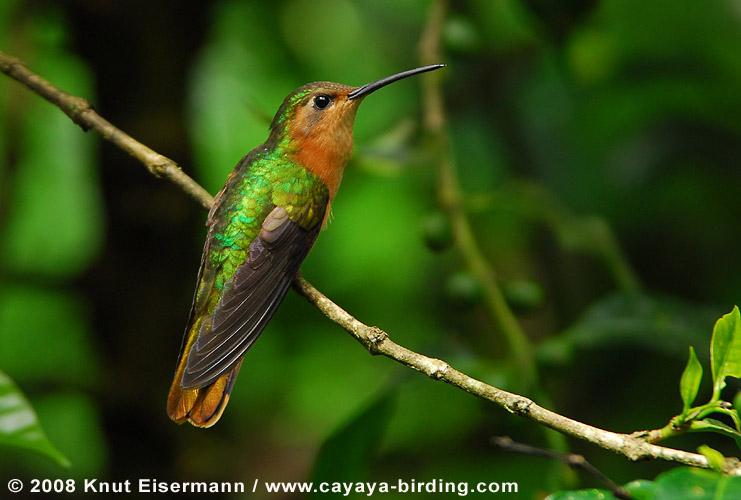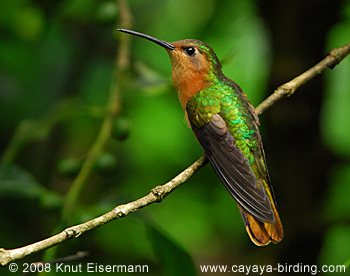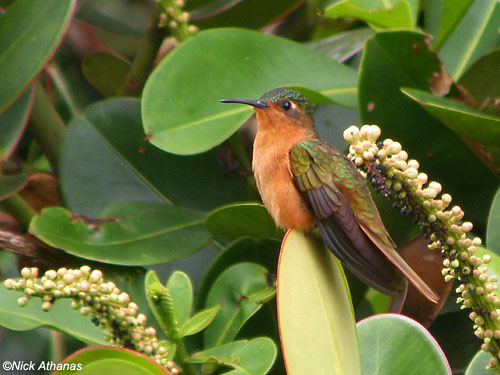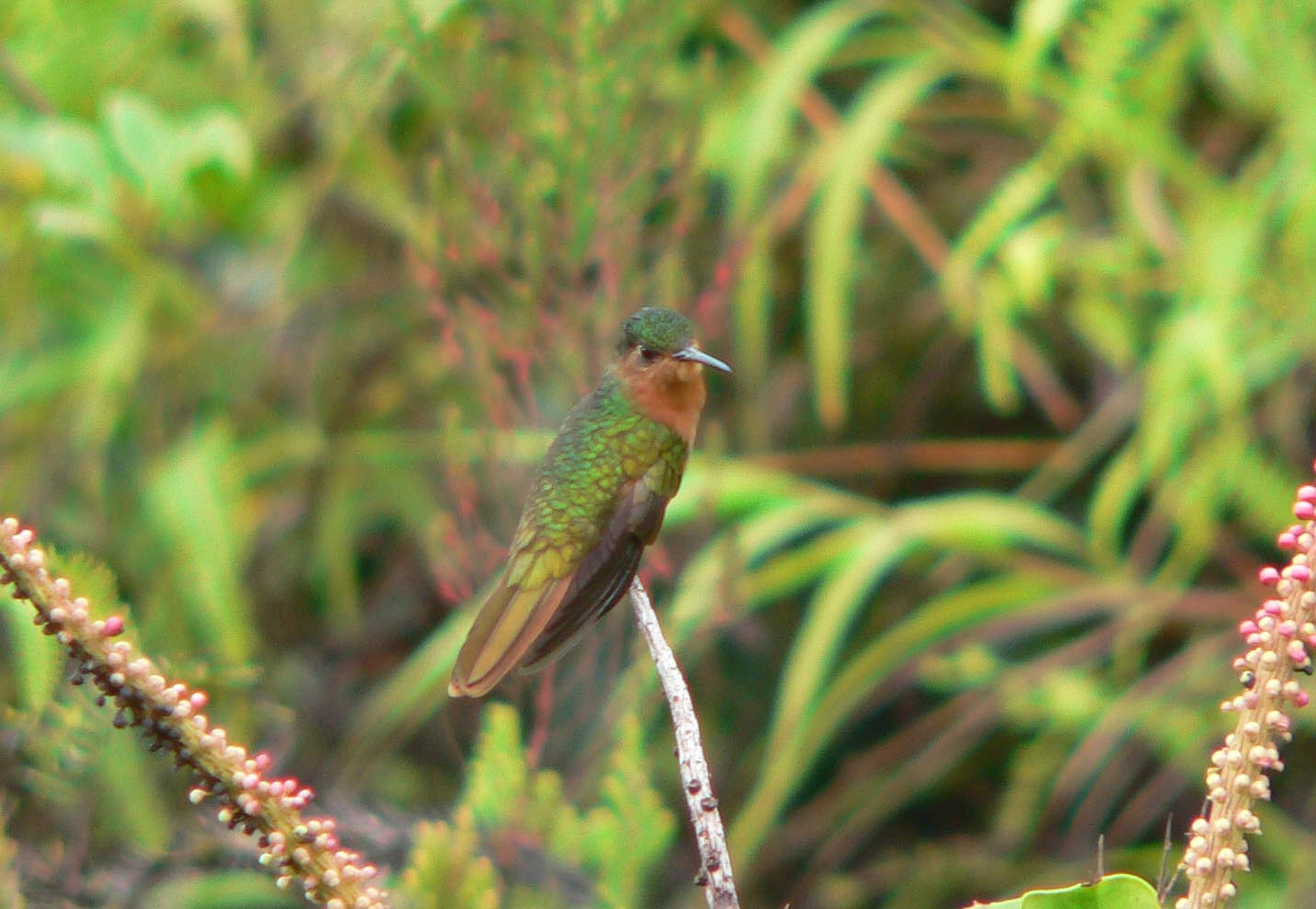
Campylopterus rufus
SUBFAMILY
Trochilinae
TAXONOMY
Campylopterus rufus Lesson, 1840, no locality = Guatemala.
Monotypic
OTHER COMMON NAMES
French: Campyloptйre roux; German: Buntschwanz-Degenflьgel;
Spanish: Colibri Rojizo Mexicano.
PHYSICAL CHARACTERISTICS
4.9–5.5 in (12.5–14 cm); female 0.23–0.24 oz (6.6–6.9 g), male
0.32 oz (9 g). Male has medium-sized, slightly decurved black
bill; upperparts metallic bronzy-green, postocular spot white;
below uniform cinnamon; tail slightly rounded, central pair of
rectrices golden-bronze, rest light cinnamon with black subterminal
band, edged cinnamon, outermost tail feather cinnamon
with lighter edges. Female similar to male, but smaller. Immatures
like adults, but with head feathers fringed buffy.
DISTRIBUTION
Pacific slope of Mexico, southern Guatemala and El Salvador.
HABITAT
Rainforest and forest edge, canyons with pine-oak forests,
plantations; occurs at 2,950–6,600 ft (900–2,000 m), occasionally
at sea-level, most numerous above 3,300 ft (1,000 m).
BEHAVIOR
BEHAVIOR
mostly unknown.
FEEDING ECOLOGY AND DIET
Nectar of flowering Plantago, Erythrina, Salvia, and Castilleja.
Insects are caught in the air by hawking. Male occupies feeding
territory at nectar-rich sources.
REPRODUCTIVE BIOLOGY
Males form small leks during reproduction. Breeds from April
to May in Oaxaca, Mexico. Cup-shaped nest of moss lined with
whitish thistle down, externally decorated with lichen, rather
exposed on horizontal branch, 3.3–6.6 ft (1–2 m) above the
ground. Two eggs; incubation 15–16 days by female. Chicks
are blackish with two rows of buffy dorsal down; fledging
23–26 days.
CONSERVATION STATUS
Restricted-range species. Locally common. Readily accepts
human-made habitats such as plantations or pastures with scattered
shrubs.
SIGNIFICANCE TO HUMANS
None known.
Other popular Animals
Photo Gallery of - Rufous sabrewing




 Animalia Life
Animalia Life